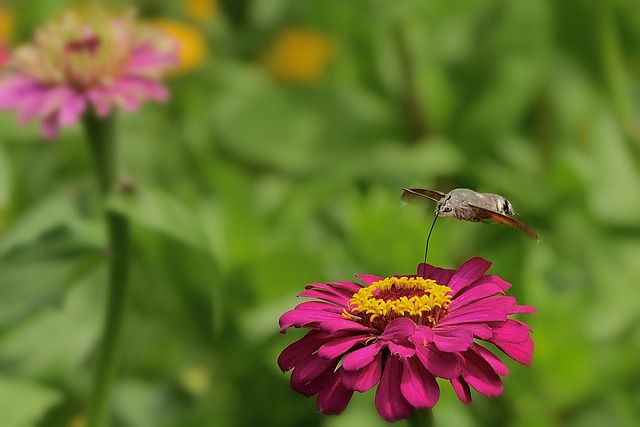Clothes moth infestations, caused by tiny Tineidae insects, thrive in dark, humid environments like attics and closets. Early signs include fabric damage, webbing, and larvae. Traditional chemical treatments offer quick fixes but fail to prevent recurrence due to residual chemicals. Holistic methods like natural repellents, heat treatments, and monitoring systems disrupt the moth life cycle effectively without harsh chemicals. Preventative measures such as regular cleaning, vacuuming, natural repellents, airtight storage, low humidity, and inspections are key strategies for managing and mitigating clothes moth infestations. Regular maintenance and proper storage practices are essential for long-term prevention and control.
Tired of constant battles with cloth moths? Discover innovative techniques to prevent recurring infestations and reclaim your space. This comprehensive guide explores both traditional and cutting-edge methods, from understanding the signs and causes of these persistent pests to implementing proactive preventative measures. Learn valuable maintenance and storage tips for long-term protection against clothes moth infestation treatment.
Understanding Clothes Moth Infestations: Signs and Causes
Clothes moth infestations can be a recurring issue for many homeowners, often leading to damage to fabrics and textiles. Understanding the signs and causes is the first step in effective prevention and treatment. These moths, belonging to the family Tineidae, are attracted to items made of natural fibers like wool, silk, and cotton, as well as fur and leather. They thrive in dark, undisturbed areas with moderate temperatures and high humidity levels—common places include attics, closets, and storage spaces.
Signs of an infestation may include small holes or patches of damage on fabrics, webbing or silken threads near the fabric surface, and the presence of tiny, wingless larvae (caterpillars). The moths themselves are typically small, measuring up to 1/4 inch in length, and can range from off-white to light brown in color. Regularly checking these areas and maintaining a clean, dry environment is crucial for clothes moth infestation treatment. Preventive measures such as storing items in airtight containers and regularly cleaning affected spaces can significantly reduce the risk of recurring infestations.
Traditional vs. Innovative Treatment Methods
In the battle against recurring clothes moth infestations, traditional methods have long been the go-to solution. These include using chemicals like insecticides or powdery substances to treat affected areas. While effective in the short term, these techniques often rely on strong chemicals that can leave residues and may not address the underlying causes of infestation. As a result, they often fail to prevent future outbreaks.
Innovative treatment methods, however, offer a more holistic approach. Techniques such as natural repellents, heat treatments, and advanced monitoring systems aim to disrupt the moth life cycle without resorting to harsh chemicals. These modern strategies focus on creating an environment inhospitable to moths, using science-backed solutions to target their specific needs and behaviors. By combining these innovative methods, homeowners can achieve long-lasting protection against clothes moth infestations more effectively than traditional treatments alone.
Preventative Measures: A Proactive Approach
Preventative measures are a proactive approach to tackling recurring clothes moth infestations head-on. Regular cleaning and maintenance are key; vacuuming carpets, upholstery, and curtains thoroughly can help remove moth larvae and eggs before they hatch. It’s essential to vacuum in hard-to-reach areas, under furniture, and along baseboards where moths tend to hide. Using natural repellents like lavender, cedarwood, or tea tree oil can also be effective as a clothes moth infestation treatment. These fragrances are known to deter moths naturally, providing an alternative to chemical treatments.
Additionally, storing clothing in sealed plastic containers or breathable cloth bags can create a physical barrier against moths. Keeping areas well-ventilated and maintaining low humidity levels is another strategic step. Moths are attracted to dark, damp spaces where fabrics can remain undisturbed for extended periods, so ensuring proper airflow and monitoring humidity levels can disrupt their breeding cycle. Regularly checking for any signs of infestation, such as webbing or frass (moth droppings), allows for early intervention, making it easier to manage and prevent widespread damage.
Maintenance and Storage Tips for Long-Term Protection
Regular maintenance and proper storage practices are key strategies in preventing long-term clothing moth infestations. One effective method is to store textiles in airtight containers, especially during periods when moths are most active, such as in warmer months or after a significant infestation. Vacuum cleaning before storing can help remove any eggs, larvae, or adult moths that may have been present.
It’s recommended to launder clothes thoroughly before putting them away, using mild detergents and low-heat settings to reduce the risk of attracting moths. Additionally, maintaining a cool, dry environment in storage areas is crucial as moths are drawn to damp and warm conditions. Regularly inspecting stored items for any signs of infestation and promptly addressing issues can significantly contribute to an effective clothes moth infestation treatment.
In conclusion, tackling a clothes moth infestation requires a multi-faceted approach. By understanding the signs and causes, employing innovative treatments alongside traditional methods, adopting preventative measures, and implementing proper maintenance and storage techniques, you can effectively manage and prevent recurring infestations. These strategies ensure long-term protection for your garments and textiles, keeping them free from these pesky pests. For effective clothes moth infestation treatment, it’s essential to combine knowledge with proactive measures.
